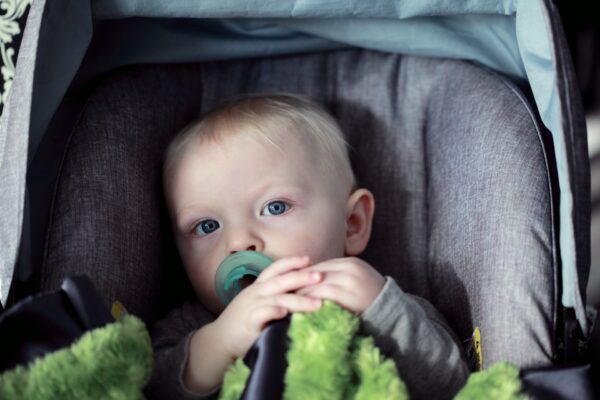
The NHTSA (National Highway Traffic Safety Administration) recommends replacing your child’s car seat after an accident. But is it really necessary? Few would argue about using a car seat—the car seat has done a remarkable job protecting infants, babies, and toddlers during car accidents. But if the seat did its job and was not damaged, why change it? The issue for NHTSA and a lot of people is reuse. At one time, the NHTSA recommendation stated car seats should be replaced after every crash, regardless of how minor, and a recommendation that was in line with car seat manufacturers. Now, the Traffic Safety Administration says that what you should do with a car seat after a crash depends on the severity of the crash.
Advancements in Car Seat Technology and Car Seat Laws
In many ways, the recommendations for car seats have evolved over the years as the car seat has itself. Though varying types of car seats have been around since the 1930s, the first federal standards for car seat safety were not instituted until 1971. In all reality, those early car seats functioned as booster seats. Safety was given no priority. The design was intended to help a child see out the car window. However, by the late 1990s and early 2000s, car seat technology had advanced in leaps and bounds. Today, in function, design, and law, a child’s protection and safety have become paramount from infancy up through eight years.
Maine Car Seat Laws
In Maine, child passenger safety is a top priority, and, by law, on the roadways, all children need to be properly secured in a child safety seat. The Maine Bureau of Highway Safety has partner locations around the state where income-eligible families can make an appointment with a certified car seat technician to obtain a car seat.
The Issue with Reusing a Car Seat
The issue of reuse became a bone of contention when NHTSA altered the recommendation to what would appear to be a much more realistic solution. In a severe car crash or even a moderate one, NHTSA’s recommendation is the same—to ensure a continued high level of protection for child passengers in case of another accident, the car seat should be replaced. The recommendation change for car seat replacement affected minor crashes—car seats do not necessarily have to be replaced after a fender bender or the like. This change conflicts with car seat manufacturer recommendations that generally urge consumers to replace a seat after any crash.
Though it may seem obvious, changing the recommendation for minor accidents did have a purpose. From a practical standpoint, it saved time and money for people and businesses. Car seats are expensive, on average, between $100 to $500. If not covered by auto insurance, replacements could be delayed until the next pay period. Changing them after a fender bender was also viewed as impractical. In practice, then, it would seem that NHTSA changes continued to ensure the protection of children but also reduced the costs for consumers.
NHTSA defined minor crashes as those vehicles that can be driven away from the crash site. If there were no injuries or airbags deployed, if the car door nearest the car seat was not damaged, and if there was no visible damage to the car seat itself, then there is no need to replace the car seat automatically.
Car Seat Replacement Recommendations Are Not That Simple
Unfortunately, such practicality came with a cost to the consumer. The change in recommendation now gave insurance companies a say over when to pay the replacement cost of a car seat after an accident. Even though the criteria for a minor crash appear straightforward, in some instances, the difference between a minor and moderate crash is a matter of interpretation. By stating that car seats “do not automatically need to be replaced following a minor crash,” NHTSA let insurance companies determine when or if replacing them fits NHTSA recommendations.
The Damage You Don’t See
In truth, when accidents happen, the vehicle itself and the occupants and objects within are affected by crash energy to a degree. Though the damage may not be visible to a car seat, crash forces could stretch the lower anchor and tether webbing or the restraint’s seat belt or even stress the plastic shell. A car seat that has been involved in a moderate to severe crash should never be reused. A car seat is a product designed for one-time use to protect your child through one crash. Consult the car seat manual and follow the manufacturer’s instructions for peace of mind. If in doubt, contact the manufacturer. Do not let an insurance company decide for you.
Let an Attorney Guide You Through Your Claim
If you have been in a car accident and an accident claim has been filed, in most cases, the settlement of that accident claim should cover the cost of all damages. This would include the replacement of your child’s car seat or booster seat, even replacing it with a different size if your child was on the verge of outgrowing the damaged seat.
We know details like this can seem unclear, but we will walk you through the process. If you are having difficulty settling a claim to your satisfaction, or are hesitant about filing a claim and what to do, contact Hardy, Wolf & Downing, Maine’s car accident lawyers, for a free consultation. We believe the system should work for you, not the insurance company.

